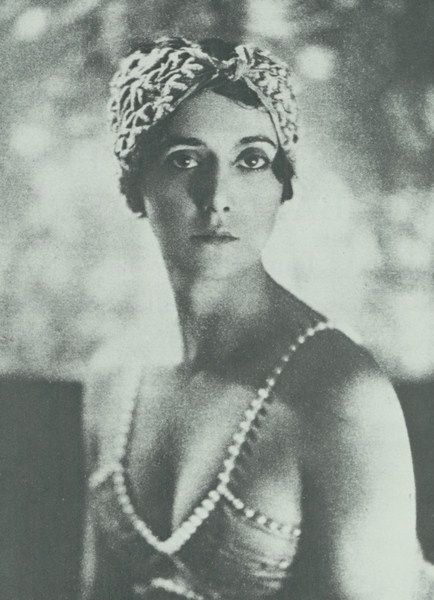

Queer Places:
Mariinsky Theatre, Theatre Square, 1, Sankt-Peterburg, Russia, 190000
Vaganova Academy of Russian Ballet, Ulitsa Zodchego Rossi, 2, Sankt-Peterburg, Russia, 191023
House, 108 Frognal, London NW3, Regno Unito
Hampstead Cemetery, Fortune Green Rd, West Hampstead, London NW6 1DR, Regno Unito
 Tamara Platonovna Karsavina (10 March 1885 – 26 May 1978) was a Russian
prima ballerina, renowned for her beauty, who was a principal artist of the
Imperial Russian Ballet and later of the Ballets Russes of
Serge Diaghilev. After settling in Britain at Hampstead in London, she
began teaching ballet professionally and became recognised as one of the
founders of modern British ballet. She assisted in the establishment of The
Royal Ballet and was a founder member of the Royal Academy of Dance, which is
now the world's largest dance-teaching organisation.
Tamara Platonovna Karsavina (10 March 1885 – 26 May 1978) was a Russian
prima ballerina, renowned for her beauty, who was a principal artist of the
Imperial Russian Ballet and later of the Ballets Russes of
Serge Diaghilev. After settling in Britain at Hampstead in London, she
began teaching ballet professionally and became recognised as one of the
founders of modern British ballet. She assisted in the establishment of The
Royal Ballet and was a founder member of the Royal Academy of Dance, which is
now the world's largest dance-teaching organisation.
In 1904, guided by her mother, Anna Iosifovna, Karsavina rejected a marriage proposal from Mikhail Fokine. This led to a simmering unease between the two, which coloured their future relationship. She later said that Fokine rarely spoke to her outside the ballet studio.[24]
In 1907, once again guided by her mother, she married the civil servant Vasili Vasilievich Mukhin (1880 – post 1941), in the chapel of the Ballet School. Mukhin occasionally travelled with her on Diaghilev tours.[25]
In June 1918, a year after her divorce from Mukhin, Karsavina married the British diplomat Henry James Bruce (1880–1951). He was the father of her son Nikita (1916–2002).[26]
She moved to Hampstead, England after helping found the Royal Ballet.
Karsavina occasionally assisted with the revival of the ballets in which she had danced, notably Spectre de la Rose, in which she coached Margot Fonteyn and Rudolf Nureyev. In 1959 she advised Sir Frederick Ashton on his important revival of La Fille Mal Gardée for the Royal Ballet. She taught him Petipa's original mimed dialogue for the celebrated scene "When I'm Married", as well as his choreography for the "Pas de Ruban", two passages which are still retained in Ashton's production.
My published books: